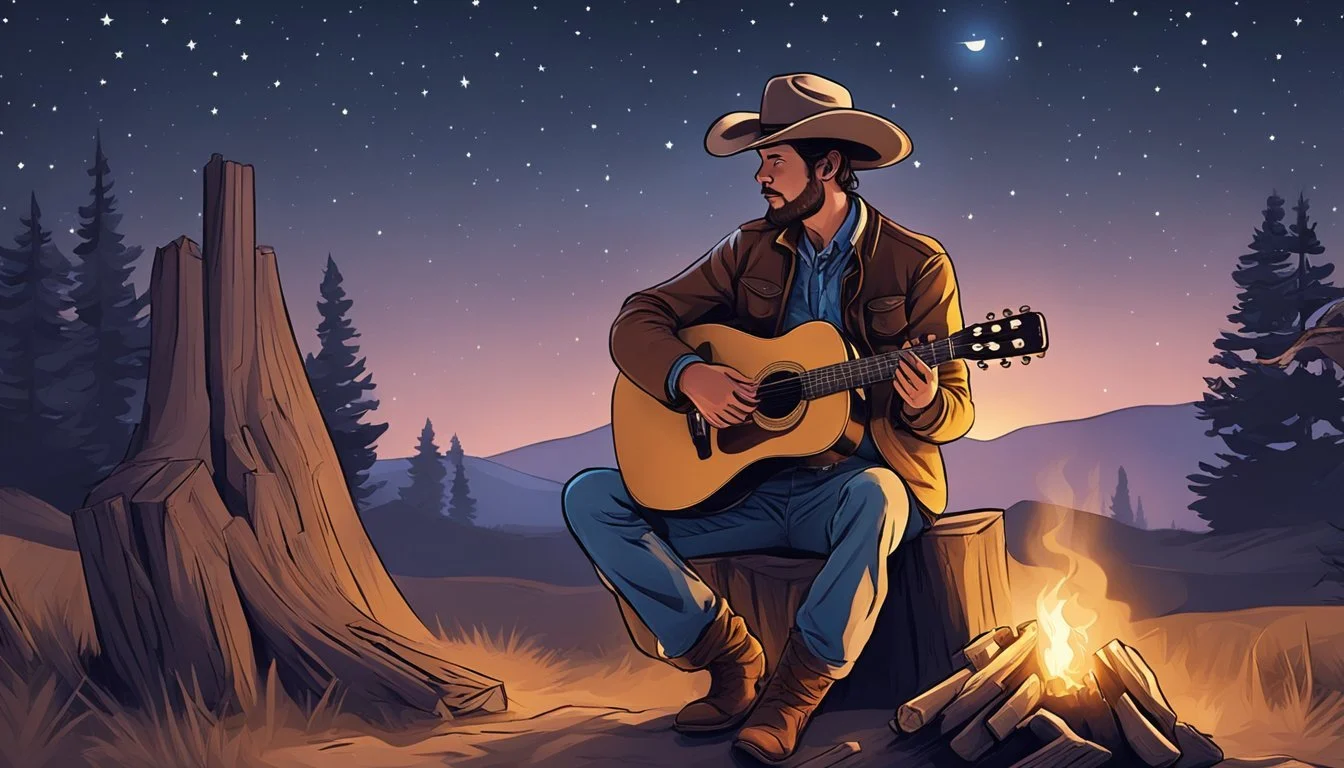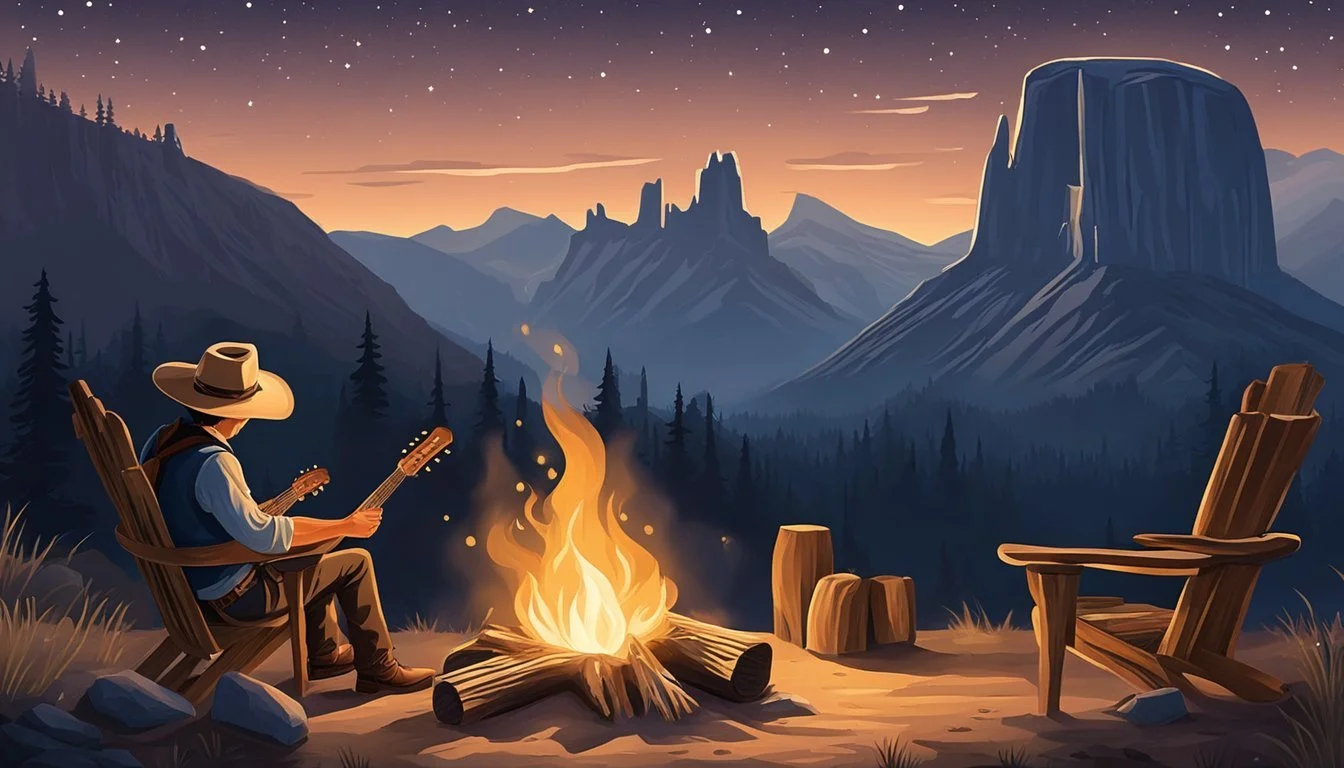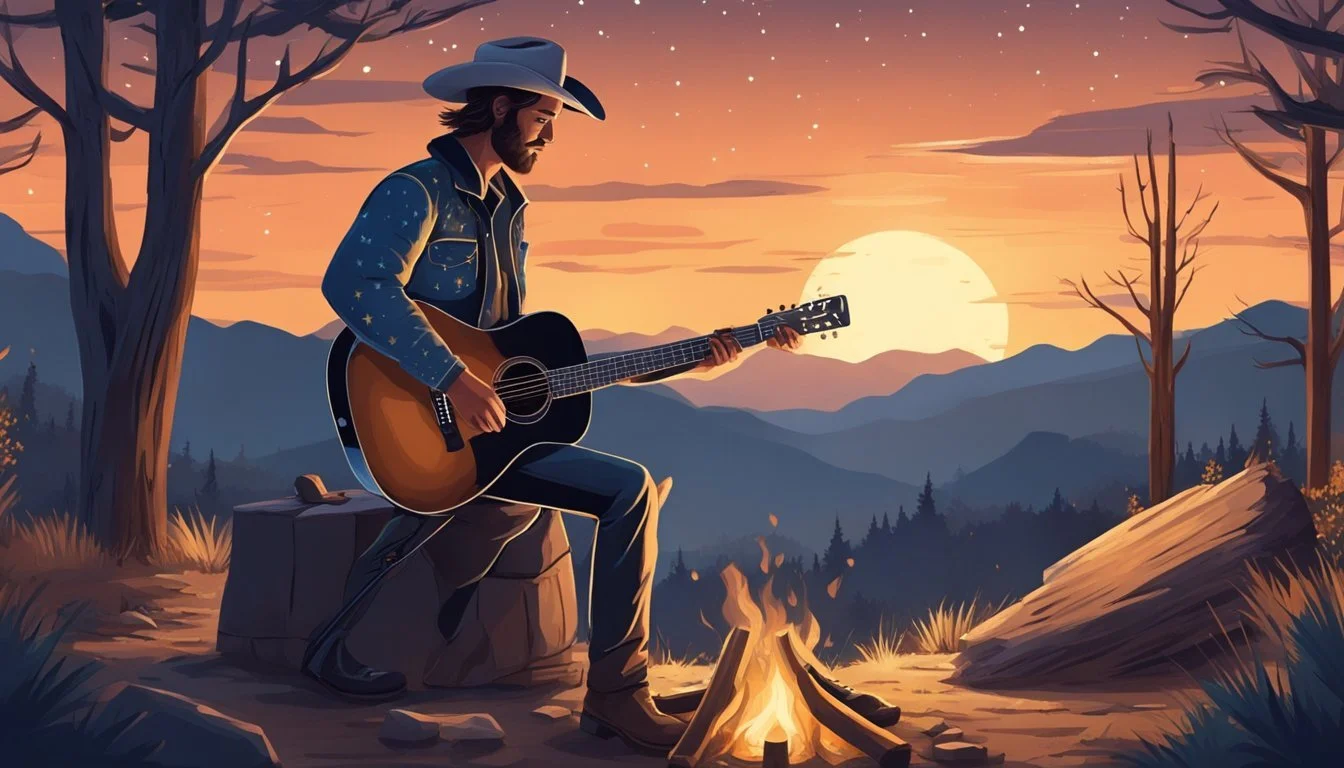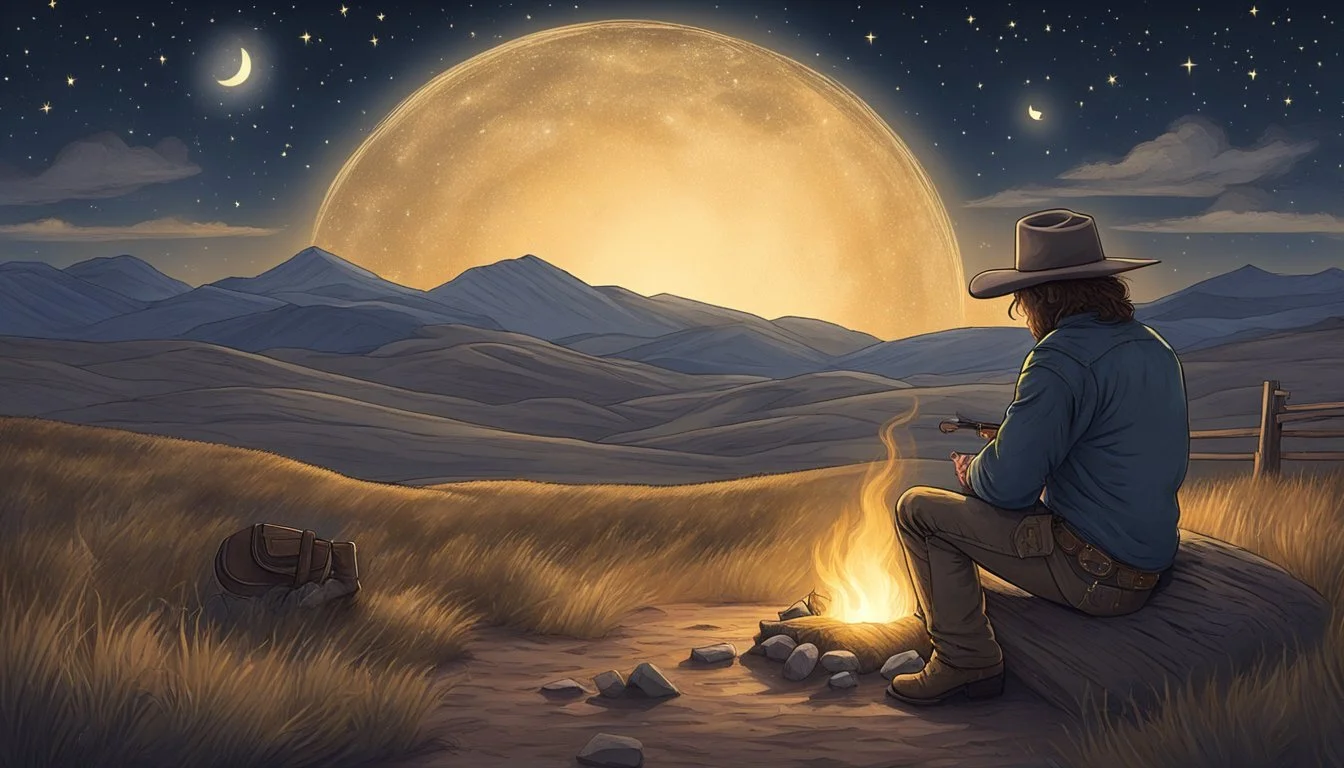Cowboy Poetry and Music
Celebrating the Heart of Western Culture
Cowboy poetry and music are unique cultural expressions rooted deeply in the heart of the American West. Originating as a form of entertainment and storytelling among ranchers and cowhands, this genre captures the daily trials, triumphs, and the expansive spirit of rural life. These artistic expressions weave together narratives of personal experiences, historical events, and the mythos surrounding the archetype of the cowboy. Typically featuring a blend of humor, pathos, and earthy wisdom, cowboy poetry and music allow for a glimpse into a way of life that has evolved yet persists in tradition and values.
Structured with traditional rhyme schemes and meters, cowboy poetry often aligns with the rhythmic cadence of a horse's gait or the measured task of tending to cattle. This symbiosis between the poet’s words and the cowboy’s world epitomizes the connection of the human spirit to the vast landscapes of the American frontier. Similarly, the music carries the legacy of diverse cultural influences, including Irish, Scottish, African, and Native American roots, showcasing a rich melodic storytelling tradition. Both poetry and music serve not just as entertainment but as a means to communicate the ethos and shared experiences of those within the cowboy community.
With the rise of contemporary mediums, cowboy poetry and music have experienced a resurgence, preserving the voices of the past while embracing modern interpretations. Artistes who may not fit the traditional cowboy mould contribute fresh perspectives and narratives, ensuring the evolution of the genre and its relevance to new generations. This evolution underscores a broader reflection of America’s changing identity, as cowboy poetry and music continue to tell the story of resilience, connection to the land, and the enduring human spirit.
The Roots of Cowboy Culture
The American West serves as the backdrop for the emergence of cowboy culture, a phenomenon deeply rooted in history and tradition. It spans from the legacy of cattle drives to the symbolic resonance of cowboy gear.
Historic Overview of the American West
The history of the American West is marked by the expansion and settlements that followed the Civil War. It was in this era that cowboy poetry took shape, chronicling the experiences of those who took part in the long cattle drives from Texas to Kansas. These oral traditions fused the narratives of various cultures that cowboys encountered, including Irish, Scottish, Moorish, Spanish, and Native American influences — each contributing to the collective memory and identity of the western frontier.
Evolution of the Cowboy Figure
The archetype of the cowboy emerged as a symbol of American individualism, resilience, and the pioneering spirit. Rooted in the demanding work of managing cattle over vast open ranges, the figure of the cowboy evolved from a worker of the land to a cultural icon. This representation was further romanticized through performance, turning cowboy poetry and music into vessels for transmitting the myths and values of the West.
Cowboy Gear and Iconography
Cowboy gear is more than functional attire; it's replete with symbolism and historical significance.
Cowboy Hat: A defining piece of the cowboy's silhouette, the wide-brimmed hat provided practical protection from the sun and rain. Over time, it has become an enduring emblem of cowboy culture.
Boots and Spurs: Designed for life on horseback, boots and spurs were essential for cowboys to manage their ride while herding cattle.
Chaps: Leather chaps guarded against the rough brush and terrain.
Each piece of attire reflects a utilitarian response to the cowboy's environment and has been etched into the identity of the American West.
The Essence of Cowboy Poetry
Cowboy poetry captures the daily experiences, historical narratives, and cultural values of the American West through its unique style and form.
Characteristics and Themes
Cowboy poetry is deeply rooted in the everyday life and work of cowboys. Themes often encompass the vastness of western landscapes, the realities of ranch work, and the romantic idealism of the cowboy lifestyle. It forms an essential part of the oral storytelling tradition, echoing the personal tales and collective experiences of those who tend the land. Common elements include:
Connection to the land: The poems frequently describe the relationship between cowboys and the natural world.
Sense of adventure and freedom: Many poems celebrate the open range and the cowboy’s wandering spirit.
Hardship and camaraderie: The arduous nature of the work and the strong bonds formed between cowboys are recurrent themes.
Forms and Structures
Traditional cowboy poetry adheres to established rhythmic and rhyming patterns, with a clear emphasis on accessibility and recitation. Characteristic features include:
Rhyme Scheme: Customarily, the poems follow a rhyme scheme—often an ABAB pattern.
Structured Verses: Many pieces use ballad stanzas or quatrain structures with regular meter and repetition.
Oral Tradition: Designed to be performed aloud, the repetitive and rhythmic quality of cowboy poetry aids in memory retention and oral transmission.
Notable Poets and Anthologies
The anthology "Sun and Saddle Leather", by Charles Badger Clark, is a seminal work recognized for its significance to the genre. Over time, cowboy poets have captured the essence of their lifestyle, while contributing to the rich tapestry of American literature. Key players and collectors in this field include:
Charles Badger Clark: One of the premier cowboy poets, his poems continue to be celebrated for their authenticity and impact.
Anthologies: Collections of cowboy poetry provide a comprehensive view of the genre's history and evolution, preserving these oral traditions in written form.
Cowboy poetry remains a testament to the values and experiences of the American West, immortalizing the voices of its people through compelling storytelling and time-honored traditions.
Cowboy Music and its Progression
Cowboy music serves as a reflection of the historical and cultural landscapes of the American West, evolving from diverse influences to a distinct genre that celebrates the cowboy way of life.
Origins and Influences
Cowboy music originated in the latter half of the 19th century, combining British ballads, familiar European melodies, and Mexican and Spanish elements. The influence of the Civil War and post-war migration towards the open cattle ranges of the Great Plains facilitated the emergence of this quintessential American musical tradition. Folk traditions from America's mountains and rural areas—particularly those of the southern states—played a significant role in shaping the thematic content and tonality of cowboy songs.
Prominent Cowboy Songs and Ballads
The repertoire consists of songs that narrate stories of cattle drives, the harsh yet free-spirited life on the range, and the personal stories of the cowboys themselves. Some well-known cowboy ballads include:
"Git Along, Little Dogies"
"Home on the Range"
"Streets of Laredo"
The enduring nature of these songs is attributed to their relatability and the vivid portrayal of the cowboy lifestyle. Recordings and performances of these songs have played a pivotal role in their preservation and dissemination.
Musical Instruments and Vocal Styles
The musical instruments typically associated with cowboy music include the guitar, fiddle, banjo, and harmonica. These instruments were portable and suited the nomadic lifestyle of the cowboys. The vocal style of cowboy music tends to be straightforward and narrative, often incorporating yodeling and call-and-response patterns which suited the communal setting of the cowboys gathered around campfires. Musicians who performed cowboy music would rely on these instruments and vocal techniques to convey both the struggles and the camaraderie experienced in the everyday life of a cowboy.
Life in the Saddle
Life in the saddle, for the cowboy, is defined by an enduring connection with nature, the rhythm of daily ranch work, and the unique challenges presented by the vastness of the range. This section unveils the cowboy’s day-to-day life, exploring the rituals and responsibilities that forge their character and fuel their artistry in poetry and song.
Daily Routines and Challenges
The cowboy begins his day with the rising sun, often before the light touches the hills. Days are long and start with feeding livestock and maintenance of gear and tack. They face challenges like extreme weather conditions and the constant need for vigilance and problem-solving. A cowboy's work is dictated by the natural elements, with wind, rain, and the relentless sun as constant companions.
Morning: Feed livestock, check water sources
Afternoon: Patrolling fence lines, managing herd health
Evening: Settling the livestock, camp upkeep
Ranch Work and Cattle Drives
Ranch work involves a plethora of tasks that require skill and endurance. The cowboy is adept at herding cattle, mending fences, and managing the land. During cattle drives, they guide their herds across the prairie to market—a demanding journey that can span many miles and require around-the-clock attention. Coordination and the cowboy's deep understanding of the livestock's behavior ensure the drive's success.
Herding Techniques: Traditional calls, horseback maneuvers
Fence Maintenance: Repair work essential to herd containment
Cattle Drive Roles: Point rider, swing rider, drag position
Relationship with the Land and Livestock
A cowboy’s relationship with the land and livestock is steeped in respect. They navigate the range with a practiced eye, attuned to the slightest change in landscape or animal behavior. Cowboys form a bond with their horses, essential partners in their daily work. The prairie is not just a backdrop but a living entity that they understand, protect, and cherish.
Tending to Horses: Grooming, feeding, and training
Land Stewardship: Knowledge of native plants, water sources
Livestock Care: Monitoring herd health, administering treatments
Living Traditions and Modern Festivities
Cowboy poetry remains a vibrant part of American cultural heritage, with ongoing celebrations and gatherings that underscore its enduring appeal. Key occasions such as the National Cowboy Poetry Gathering in Elko, Nevada, serve as high points in a calendar that continually honors the cowboy spirit.
National Cowboy Poetry Gathering
The National Cowboy Poetry Gathering, hosted by the Western Folklife Center, is a seminal event that captures the essence of cowboy culture. Held annually in Elko, Nevada, this gathering champions the traditions of cattle ranching in the American West. It is not just a poetry event; it includes music, storytelling workshops, and exhibitions of cowboy gear.
Founded: 1985
Participants: Poets like Waddie Mitchell
Activities: Poetry, music, workshops, culinary delights, gear exhibitions
Regional Events and Their Significance
Throughout the year, regional events across the United States pay homage to the unique cowboy way of life through local cowboy poetry readings and music festivals. These gatherings are significant not only as celebrations of regional heritage but also as contributors to the preservation and dissemination of the tradition.
Impact: Foster community identity and historical continuity.
Types: Competitions, educational sessions, and recitals.
Contemporary Cowboy and Cowgirl Poets
Today's poets, such as Waddie Mitchell, continue to tell stories of the West with authenticity and pride. Poets draw inspiration from predecessors like Gail I. Gardner and Bruce Kiskaddon, whose works are treasured standards within the genre, evident in contemporary verses.
Themes: Rural life, nature's beauty, the realities of ranch work.
Platforms: Live performances, books, online media.
The torch of cowboy poetry and music is carried forward through both vast gatherings and intimate local venues, illustrating a living tradition that is continually reinvigorated by each new voice.
Expressions of the Western Soul
Cowboy poetry and music serve as rich tapestries of the American West, weaving themes of love, loss, adventure, and the very fabric of the cowboy’s life.
Narratives of Love, Loss, and Adventure
Narratives central to cowboy poetry often encapsulate the full dynamism of love, with stories that capture heartfelt affection and poignant separation. Love in the cowboy genre is a multifaceted experience, as it incorporates the affection for the land, one's partner, and the lifestyle itself. The tales of loss echo the cowboy's acceptance of life's relentless pace, portraying both the wistful longing for what once was and the inevitable process of moving on. Adventure manifests in the verse as scenes of unfettered freedom, expressing the daily risks and rest inherent in the lives of those bound to the open range.
Humor and Satire in Cowboy Verse
Amidst the heartfelt and the epic, cowboy poetry finds room for humor and satire. It wields a sharp wit that often emerges from the daily grind of the cowboy’s existence or the lively interactions within the community. Comedic anecdotes reflect on both the absurdity and delight found in the creation of the cowboy’s tales, providing a lighter lens through which to view the West.
Spiritual and Philosophical Reflections
The spiritual and philosophical essence of cowboy music and poetry reflects a profound connection to the land and a contemplative approach to life. These verses often explore existential questions and offer reflections on humanity's role in the grand tapestry of nature. They suggest a deep engagement with life's grandeur and hardships, marked by an enduring spirit of resilience and introspection.
The Influence of Cowboy Poetry and Music
Cowboy poetry and music have left a significant mark on the cultural fabric of America, shaping its Western identity and contributing to its folklife and heritage.
Impact on Western Identity and Image
Cowboy poetry and music evoke the spirit of the American West, capturing the trials and experiences of the cowboy life. These art forms serve as a narrative vehicle, preserving the myths and realities of the frontier. They reflect how cowboys, often considered icons of rugged individualism, influenced America's view of itself as a nation. Furthermore, events like the gatherings organized by the Western Folklife Center affirm the cowboy's cultural significance, offering a platform where poets and musicians continue to define and express western identity.
Contribution to American Folklife and Heritage
As a unique expression within the arts, cowboy poetry and music enrich American culture by highlighting the value of storytelling and the oral tradition. These art forms have deep roots in various cultural heritages including Irish, Scottish, Spanish, African, and Native American influences, thus reflecting the diverse tapestry of American society. Through festivals and performances, cowboy poets and musicians play a pivotal role in the preservation and dissemination of America's folklife, ensuring that the essential narratives of the American west are passed down through generations.
Cowboy Poetry and Music in the Digital Age
In the digital era, cowboy poetry and music have embraced technological advancements for archiving, preservation, and contemporary media adaptation, ensuring the cultural heritage thrives for future generations.
Archiving and Preservation Efforts
Organizations like the Western Folklife Center serve as custodians of cowboy poetry and music, maintaining archives that are crucial for preserving this unique cultural expression. Their collections include a wealth of fieldwork recordings, commercial albums, and anthologies from celebrated artists and writers. These archives sometimes house rare and out-of-print works, making their digital preservation all the more significant.
The Western Folklife Center Archives and gift shop:
Fieldwork recordings
Event recordings
Commercial recordings
Books and anthologies
Adaptation to Contemporary Media
Cowboy poets and musicians have also adapted to contemporary media platforms to reach a broader audience. Podcasts like Ranch Rhymes and online channels such as Western Folklife TV provide digital outlets that offer accessibility to enthusiasts and new audiences alike.
Contemporary Media Platforms:
Ranch Rhymes Podcast: Operating from 2006 to 2009, available on iTunes and other media players.
Western Folklife TV: Streaming archival recordings and live entertainment, promoting educational content.
Fusion of Traditions: A Cultural Legacy
Cowboy poetry and music are rich tapestries woven from diverse cultural threads. These art forms are rooted in the historical experiences and narratives of various ethnic groups that shaped the American West.
Inclusion of Different Ethnic Narratives
Cowboy poetry historically reflects the experiences of the cowboys who participated in the long cattle drives across the American West. A significant element of this poetic tradition is its inclusiveness and representation of different ethnic narratives. The verses encapsulate a unique blend of the Irish storytelling, Scottish seafaring traditions, Moorish and Spanish influences, and Native American experiences.
The presence of black cowboys is frequently recognized in contemporary collections. Artists like Dom Flemons pay homage to their legacy, emphasizing the multicultural aspect of cowboy poetry and music. These works serve to recognize the contributions of black cowboys, who were often overlooked in historical accounts but were integral to the cattle herding culture.
Legacy and Educational Value
The continued tradition and celebration of cowboy poetry and music underscore their educational value. Schools and cultural institutions often use these artistic expressions to teach about the diverse history of the American West. They provide an engaging medium to convey the stories and struggles not only of white men but also of those who have historically been marginalized.
The tradition also offers a form of historical preservation, capturing the essence of a way of life that has evolved yet continues to resonate. Cowboy poetry gatherings, such as the National Cowboy Poetry Gathering, foster a sense of community, ensure the longevity of these traditions, and facilitate their passage to new generations.







